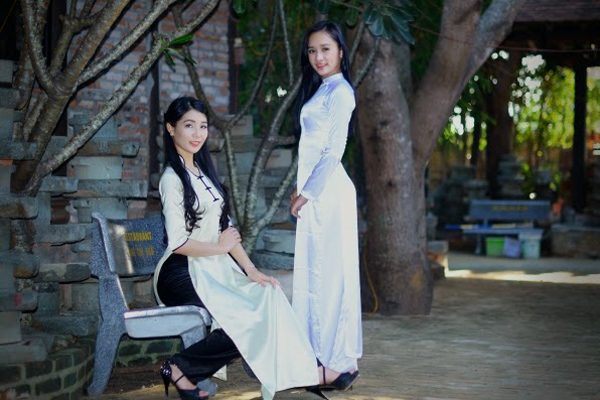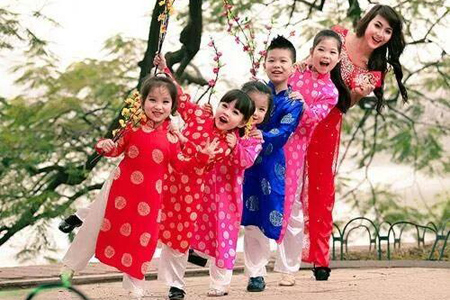The Western skirt has become ubiquitous in Hanoi these days, giving an almost European look to some "chic" quarters of the city.
Before that, while not a few women had adopted jeans and T- shirts, most would stick to blouses and black trousers.
The blouse, however, was an improvement on wartime garb, for it had changed in color from the military khaki, the working class navy blue or the classical white to the bright colors of the rainbow and gorgeous flowery patterns.
Now that the time of sartorial austerity is over the traditional black trousers, though still preferred by women of a certain age are on the way out too.
Today's trousers are either skintight or baggy, in the Indian style, and are of many colors. Most often they are white to go with the seductive "ao dai" — that "long robe" with two free-following flaps which adds to the proverbial sveltness of the Vietnamese women.

"The "ao dai", by the way, was the creation of a Fine Arts College graduate in the 1930s who changed the ancient four-flap Tonkinese tunic and the aristocratic tunic of Hue into what was then dubbed as the "Lemur style."
In the 1920s and 1930s Hanoi women gradually gave up the peasant skirt for trousers of black muslin or black satin. The more fashionable bravely adopted trousers of white silk or linen which at first were said to be fit only for Kham Thien Street geishas.
Let's now return to the skirt.
Skirts had always been worn in Vietnam until the 15th century when the Ming from China, in a bit to enforce sinicization, ordered the Vietnamese to dress in the Chinese way, with trousers for women.
With the liberation of the country by the Le, skirts made a come-back. King Le Huyen Tong in 1665 decreed the ban of trousers for women. His edict stood for almost three centuries, until it was reversed by the Nguyen King of Minh Mang (1820-1840), who restored the compulsory use of trousers, earning himself the derision of a popular song of the period:
"The Eight month came with a stupefying Royal Edict Banning the use of bottomless trousers!
Now, if I stay at home the market will be less active But if I go I’ll have to deprive my man of his trousers, Which would be a pity.”
Now it's the turn of fashion to have its say.



